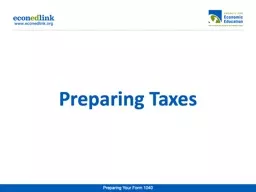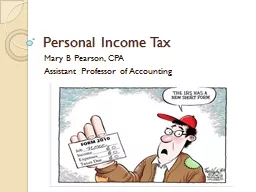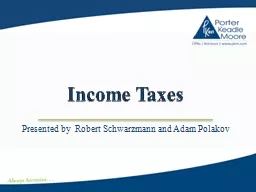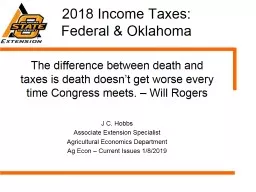PPT-Preparing Taxes Personal Income Facts in the U.S.
Author : debby-jeon | Published Date : 2019-11-08
Preparing Taxes Personal Income Facts in the US The US tax code contains more than 37 million words and is more than 70000 pages in length Americans spend 76 billion
Presentation Embed Code
Download Presentation
Download Presentation The PPT/PDF document "Preparing Taxes Personal Income Facts in..." is the property of its rightful owner. Permission is granted to download and print the materials on this website for personal, non-commercial use only, and to display it on your personal computer provided you do not modify the materials and that you retain all copyright notices contained in the materials. By downloading content from our website, you accept the terms of this agreement.
Preparing Taxes Personal Income Facts in the U.S.: Transcript
Download Rules Of Document
"Preparing Taxes Personal Income Facts in the U.S."The content belongs to its owner. You may download and print it for personal use, without modification, and keep all copyright notices. By downloading, you agree to these terms.
Related Documents














